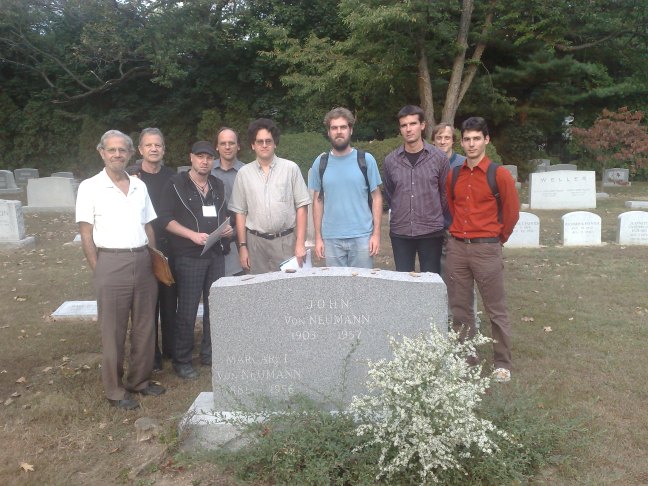Deep Beauty: Understanding the Quantum World
Posted by John Baez
There were many amazing mathematicians in the 20th century — people with world-transforming powers, like Gödel, Mac Lane and Grothendieck. But surely, no matter how short your list of greats, John von Neumann would have to be on it. From topics so abstract as the foundations of set theory and quantum mechanics, to topics so practical as game theory, the Manhattan project and the first computers, he seemed to be everywhere… right at the cutting edge.
Soon there will be a symposium honoring the 75th anniversary of von Neumann’s book The Mathematical Foundations of Quantum Mechanics:
- Deep Beauty: Mathematical Innovation and the Search for an Underlying Intelligibility of the Quantum World, Princeton University, October 3-4, 2007. Organized by Hans Halvorson.
Hans Halvorson is a philosopher at Princeton. I really like his idea that new mathematics may be needed to make quantum mechanics more intelligible, and that philosophers should get involved. I think it’s true.
Unfortunately attendance is by invitation only. Participants include Časlav Brukner, Jeffrey Bub, Bob Coecke, Andreas Doering, Lucian Hardy, Chris Isham, Simon Kochen, Klaas Landsman, Miklós Rédei, and Stephen Summers. Café regulars will recall that Coecke, Doering and Isham have all visited here. A number of graduate students are also attending the symposium, including my student Mike Stay and Isham’s student Jamie Vicary, both café regulars themselves.
I’ll try to report more on this symposium later. Right now you can see a very preliminary draft of a paper Spans in Quantum Theory, which is what I’ll be talking about.
Among other things, I want to start by making the point that categories of states and processes in quantum theory tend to be symmetric monoidal categories with duals, also known as dagger-compact categories. This point has already been made by Bob Coecke — and since he’ll also be at the symposium, he and I should figure out how to join forces in explaining this to everyone. But then, I want to explain how such categories naturally arise as categories of spans, and what spans have to do with Feynman path integrals. And then, I want to talk about spans of groupoids, and the whole groupoidification program. The fun part will be seeing how much I can cover — intelligibly! — in an hour.
By the way: speaking of the “intelligibility” of quantum mechanics, I can’t help but remember a line by von Neumann that always bugged me. He’s supposed to have said, in response to annoying questions from some student:
In mathematics you don’t understand things. You just get used to them.
I don’t agree with that, and it’s hard for me to imagine a good mathematician saying that — unless he had something very specific in mind. Maybe he was just trying to get rid of the student?


Re: Deep Beauty: Understanding the Quantum World
I don’t agree with that, and it’s hard for me to imagine a good mathematician saying that — unless he had something very specific in mind.
It’s clearly an outrageous exaggeration at best, probably for the humor value. However, there’s a kernel of truth to it. There’s a lot of mathematical machinery that can’t be understood via a single ah-ha moment: mastering it requires seeing lots of different examples, recognizing new examples one wasn’t expecting, seeing how the machinery really tells one what one wants to know, etc. This is intrinsically a slow process, and there’s no sense sitting around waiting to magically “get it”.